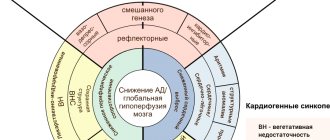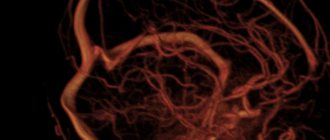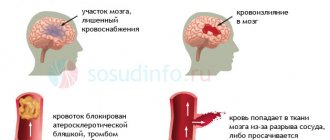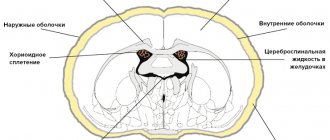The transition from intrauterine development to life in the outside world is associated with major changes in almost all organs and systems of the newborn’s body. And although these changes are inherent in nature, a certain time must pass for the baby to adapt to them - this is called transient states. There are several of them, and they develop individually in each baby. Many of these conditions have no clinical manifestations and do not cause obvious inconvenience to either the baby or his mother. But there are those that are noticeable to parents and often cause them concern. They will be discussed in this article.
Physiological weight loss
In the first few days of its life, every baby loses weight. This is a natural process that occurs because a lot of water comes out of the newborn’s body, and he has to use the reserves of nutrients received in utero. There is also relative starvation, which is associated with a deficiency of milk in the mother in the first days after childbirth. The norm is weight loss not exceeding 6-10% of the baby’s initial body weight. As a rule, by 8-10 days full-term babies and by 14 days premature babies gain the weight they had at birth.
After this, the child’s weight regularly increases. Pediatricians and parents closely monitor this indicator, as it indicates proper development.
Rapid restoration of a child's weight is facilitated by:
- early breastfeeding,
- free feeding mode,
- compliance with thermal conditions,
- prevention of hypogalactia in mother,
- rational baby care.
Risk factors
In most cases, transient ischemic attack is caused by atherosclerotic plaques blocking small blood vessels. The risk group for developing transient ischemic attack includes persons suffering from the following diseases and conditions:
- atherosclerosis of cerebral vessels - this pathology is considered the main cause of ischemic attacks. 90% of strokes in older people are caused by atherosclerosis;
- arterial hypertension – ranks second in the incidence of strokes;
- hereditary predisposition - if any of the family members have similar conditions in the past, the likelihood of developing an ischemic stroke increases;
- age factor - after 60 years, the risk of developing the disease increases significantly.
- diabetes mellitus – hypertension and increased blood clotting in patients with diabetes lead to worsening atherosclerotic damage to blood vessels;
- systemic vascular diseases;
- obesity – excess body weight is quite often the cause of ischemic attacks;
- heart diseases;
- osteochondrosis of the cervical spine, especially spasm of the cervical artery;
- alcohol abuse and smoking.
According to statistics, transient ischemic attacks more often affect middle-aged male patients. However, symptoms can also appear in childhood and young adults with cardiovascular disease.
Expert opinion
Author: Elena Mikhailovna Bunina
Psychiatrist, doctor of the highest category
Transient ischemic attack of the brain is a transient disturbance in cerebral circulation. Most scientists call the disease a mini-stroke because the signs and symptoms of both diseases are similar. However, unlike a stroke, TA does not manifest itself in such a long-term and fatal way for a person. An attack occurs only at the moment when the blood flow in the vessels is disrupted and they become blocked. Symptoms disappear when blood circulation is restored on its own, without surgery.
Diagnosis of transient ischemic attack is carried out on the basis of information obtained during medical research:
- computed tomography;
- magnetic resonance imaging;
- Doppler ultrasound;
- positron emission tomography of all parts of the brain.
To make the most accurate diagnosis, additional laboratory procedures may be prescribed.
Symptoms of the disease appear precisely in those areas where the affected area of the brain has control. After the clot disappears, the symptoms disappear, but this does not mean that the disease can be ignored. On the contrary, the sooner treatment is started, the better the effect will be.
Doctors at the Yusupov Hospital will conduct a comprehensive examination of patients and prescribe treatment appropriate to the symptoms and severity of the disease.
Heat imbalance
Borderline conditions in newborns also include a transient disturbance of heat balance or metabolism. The baby's body temperature may fluctuate - increase or decrease, usually slightly. This is easy to explain. Thermoregulation processes are still immature and imperfect, very sensitive to environmental changes. A child's heat balance depends on any fluctuations in indoor or outdoor temperature.
Therefore, it is extremely important to ensure a suitable temperature in the room (20-220C for full-term babies, 23-240C for premature babies), protect them from overheating and drafts, and dress according to the weather.
Transient cerebrovascular accident
Typically sudden and acute development. General cerebral symptoms of PNMK are headache, weakness, nausea (maybe vomiting), blurred vision, vegetative-vascular reactions (hot flashes, trembling, sweating, etc.), short-term disturbances of consciousness. Focal symptoms depend entirely on the topic of the ischemic process. On average, PNMK lasts from several minutes to several hours. Pathognomonic is the complete restoration of impaired neurological functions within 24 hours.
PNMK in the ICA (internal carotid artery) system is characterized by variable zones of hypoesthesia and/or paresthesia, covering individual areas of the skin of the extremities or face on the side opposite (heterolateral) to the ischemic focus. Central paresis may be observed, spreading to local muscle groups or one limb. Less common are hemihypesthesia and hemiparesis. Muscle strength is usually moderately reduced. Anisoreflexia is typical, sometimes pathological Rossolimo and Babinsky reflexes are present. Aphasia or dysarthria is often noted. There may be a decrease in visual acuity in one eye and the appearance of paroxysm of Jacksonian epilepsy, in some cases turning into a generalized seizure.
PNMK in the vertebrobasilar basin manifests itself with systemic dizziness with tinnitus, autonomic disorders, vestibular ataxia (discoordination of movements, unsteadiness of gait, instability in the Romberg position, etc.), visual disturbances in the form of metamorphopsia, photopsia, loss of visual fields. Horizontal nystagmus is noted. Dysarthria, dysphonia, diplopia, dysphagia, and the occurrence of alternating syndromes are possible. PNMK in the vertebrobasilar area is usually accompanied by a headache in the back of the head, the intensity of which is associated with head movements.
A transient disorder of cerebral circulation in the brain stem area is manifested by systemic dizziness, paresis of the extraocular muscles, hearing loss, and double vision. Transient disturbances in swallowing and articulation, hemianopia, and local hypoesthesia of the facial skin may appear. With PNMK in the region of the medulla oblongata (reticular formation, inferior olives), the so-called. drop attacks are transient paroxysms of immobility as a result of severe muscle weakness. With PNMK in the medial parts of the temporal lobe, short-term Korsakoff's syndrome is observed - loss of orientation in the environment and time, combined with a memory disorder about current events.
It should be noted that simultaneous stenosis of several arteries of the head is possible, leading to transient ischemia in several vascular territories. In such cases, the clinical picture of PNMK combines symptoms of damage to all cerebral areas involved in the ischemic process.
Sexual crisis
This condition is observed in 2/3 of babies. Most often girls experience this. Rarely – premature babies. This phenomenon is associated with the reaction of the newborn’s body to release from maternal estrogens.
Often in the first week of life in girls, and sometimes in boys, the mammary glands slightly enlarge, but no inflammatory changes are observed on the skin. As a rule, engorgement increases by the 8-10th day of life, and by the end of the first month it subsides. Sometimes a fluid resembling colostrum is released from the baby's mammary glands. This phenomenon is normal! Parents should not be afraid.
In most cases, all of the above treatment does not require. BUT! If the engorgement of the mammary glands becomes significant, and the skin over them is red and hot to the touch, the body temperature rises and the child behaves restlessly, then a consultation with a pediatrician is necessary.
Do not squeeze liquid from your baby's nipples! This can cause pain to your baby and lead to infection.
In the first days of life, girls often experience grayish-white mucous discharge (possibly mixed with blood) from the external genitalia. These are manifestations of transient vulvovaginitis. After a few days, the discharge disappears. All this is also a normal reaction and does not require treatment. Hygienic care and regular washing are required.
Transient ischemic attack
Transient ischemic attack is a type of transient disorder of cerebral circulation of vascular origin, which is manifested by impaired brain function. Transient ischemic attacks develop quickly and last no more than one day. They are manifested by general cerebral and focal neurological symptoms or a combination of them.
Causes
Transient ischemic attacks occur due to insufficient blood supply to the brain. Their cause may be cerebral atherosclerosis, high blood pressure, diabetes mellitus, or a combination of these diseases. Also, transient ischemic attacks can occur with damage to the vertebral arteries, vasculitis, atrial fibrillation, or myocardial infarction.
Development mechanism
Microscopic emboli can break off from atherosclerotic plaques located in the vertebral and carotid arteries, or from blood clots. They settle in the arteries of the brain and contribute to their spasm. Further, the permeability of the vascular wall increases, and perivascular edema of the brain tissue develops. It causes focal neurological symptoms that persist for a short time. As soon as microemboli disintegrate or lyse, neurological symptoms begin to regress.
Symptoms
The clinical picture of a transient ischemic attack depends on where exactly the vasospasm developed. If this happened in the internal carotid artery, the patient will complain of a feeling of astringency in one half of the body. Sometimes he may only be bothered by his upper or lower limb. In some cases, both motor and sensory lesions are observed simultaneously.
If the internal carotid artery is involved on the same side where the lesion is localized, vision decreases or disappears, and on the opposite side, impaired motor ability of the limbs develops. Transient ischemic attacks in the area of the vertebral artery are accompanied by dizziness and vegetative-vascular disorders.
Treatment
Patients with transient ischemic attack require hospitalization in the neurology department. In case of arterial hypertension, they are prescribed antihypertensive drugs, and in case of arterial hypotension, a solution of caffeine-sodium benzoate. The use of antithromboaggregants (acetylsalicylic acid) is indicated. To correct the fluid characteristics of the blood, pentoxifylline is prescribed, and to increase venous tone, Cavinton is prescribed. For cerebral edema, aminophylline and mannitol are used. If transient ischemic attacks occur repeatedly, then patients are administered direct-acting anticoagulants, and hemodynamic disturbances are eliminated with the help of rheosorbilact.
Skin changes
In the first week of life, transient changes in the skin occur in the vast majority of newborns. The most common ones are:
- Simple erythema or physiological catarrh
is reactive redness of the skin after removal of vernix and the first bath. The erythema intensifies on the second day and disappears by the end of the first week of life (in premature babies - after 2-3 weeks). - Physiological peeling of the skin
. It can be large-plate, small or pityriasis. As a rule, it occurs on days 3-5 of life. In post-term babies, very profuse peeling is observed. No treatment is required; skin peeling goes away on its own. - Birth tumor
. This is swelling of the presenting part of the body due to venous hyperemia, which disappears on its own within 1-2 days. Sometimes small pinpoint hemorrhages (petechiae) remain at the site of the birth tumor, which disappear on their own over time. - Erythema toxicum
. Occurs in many newborns on days 1-3 of life. On the skin - face, trunk and limbs - erythematous spots or papules appear against the background of erythema. Such rashes disappear within a week, but can sometimes persist during the first month of life. The condition of the children is not impaired and no treatment is required. - Milia
. These are white-yellow nodules up to 2 mm in size. Located on the face: wings of the nose, bridge of the nose, chin area, forehead. The formations are accumulations of sebum that have not reached the surface of the epidermis. No special treatment is required. If there are signs of inflammation around the nodules, we recommend treating the skin with an antiseptic solution.
Transient jaundice
Yellow coloration of the skin and sclera with physiological jaundice does not appear from birth, but on the 3-4th day, reaching a maximum on the 5-6th day. The physiological process of destruction of red blood cells and the release of indirect bilirubin from them, as well as the immaturity of the liver enzyme system, leads to the accumulation of indirect bilirubin in the blood and skin, giving the latter a jaundiced tint. Sometimes transient jaundice has a protracted course. In this case, it is necessary to observe a pediatrician with an examination to exclude pathological conditions.
ICD-10 code
TIA in ICD-10 (International Classification of Diseases, 10th revision) is as follows: Transient transient cerebral ischemic attacks (attacks) and related syndromes (G45).
TIA is included in the group of episodic and paroxysmal disorders (G40-G47). A transient ischemic attack occurs as a result of blockage of a vessel supplying the brain. Atherosclerotic plaques or blood clots may form in the vessel, interfering with normal blood flow. Rarely, TIA occurs as a result of hemorrhage. However, in this case, blood circulation is restored quite quickly.
Make an appointment
Transient catarrh of the intestines
Transient intestinal catarrh (physiological dyspepsia of newborns, transient intestinal catarrh) and transient dysbiosis are transitional conditions that develop in ALL newborns.
On the 1st-2nd day of life, babies pass their first stool (meconium), which is a thick viscous mass from dark green to black. On days 3-4, transitional stool appears - heterogeneous in consistency and color (with lumps, mucus, green-yellow color). By the end of the first week, the stool is usually set in the form of a yellow mush.
Transient dysbiosis is associated with the inevitable colonization of the intestinal mucosa by bacteria after birth. In subsequent months, the presence of undigested lumps in the stool, and occasionally mucus, may also be the norm if the baby has gained good weight and is feeling well. This is explained by physiological lactose deficiency. Young mothers should discuss this issue with their pediatrician.
Uric acid infarction
Despite the menacing name, this condition should not cause concern for parents. Outwardly, it manifests itself as follows: in the first week of life, the baby produces cloudy, brick-yellow urine. This is explained by metabolic disorders in the kidneys and the deposition of crystals of uric acid salts in them. As a rule, by the end of the first week these phenomena disappear. If the color of urine does not return to normal by the end of the second week of life, you should consult a pediatrician for advice.
We have listed the main phenomena when faced with which young parents begin to sound the alarm. We hope that the article will be useful and you will be able to fully enjoy communication with your baby without worrying about transient conditions and knowing that this is a temporary phenomenon. Be healthy!










